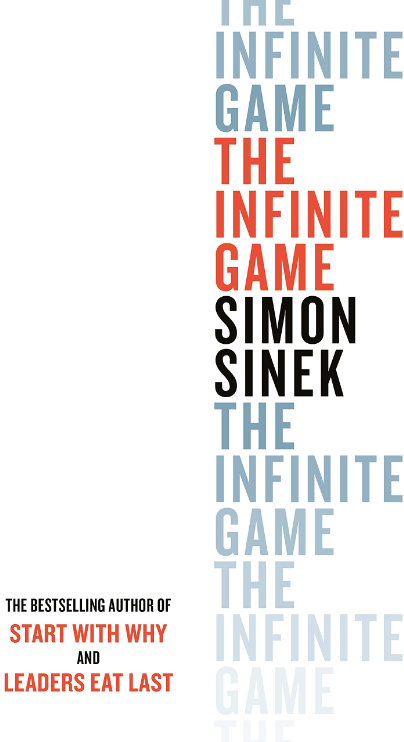Any leader who wants to adopt an infinite mindset must follow five essential practices:
- Advance a Just Cause
- Build Trusting Teams
- Study your Worthy Rivals
- Prepare for Existential Flexibility
- Demonstrate the Courage to Lead
An infinite mindset thinks in the longer term whereas a finite mindset is short term thinking. For example Apple versus Microsoft, the later displaying short-term thinking. The Vietnam war was another example in which Americans were fighting to win a short-term war, whereas the Vietnamese despite taking despite taken more casualties were fighting for survival with a much longer term mindset.
For a business to adopt an infinite mindset it must possess three pillars; to advance a purpose, protect people and generate a profit:
- Advance a purpose: Offer people a sense of belonging and a feeling that their lives and their work have value beyond the physical work.
- Protect people: Operate our companies in a way that protects the people who work for us, the people who buy from us and the environments in which we live and work.
- Generate profit: Money is fuel for a business to remain viable so that it may continue to advance the first two priorities.
The responsibility of business is to use its will and resources to advance a cause greater than itself, protect the people and places in which it operates and generate more resources so that it can continue doing all those things for as long as possible. An organization can do whatever it likes to build its business so long as it is responsible for the consequences of its actions.
When Mike Duke and Steve Ballmer took the helms at Walmart and Microsoft, respectively, both made the choice to lead their companies down a finite path. Had the companies stayed on these paths, they may have been forced to drop out of the game altogether. The CEOs who replaced them, Doug McMillon at Walmart and Satya Nadella at Microsoft, also made a choice—to do what they needed to do to put their respective companies back on the infinite path. And though they still face many challenges, both seem genuinely committed to leading a Cause, not just running a company.
Courageous Leaders are strong because they know they don’t have all the answers and they don’t have total control. They do, however, have each other and a Just Cause to guide them.
When leaders exercise the Courage to Lead, and treat people as individuals, the people who work inside their organization will start to reflect that same courage.
You need a Just Cause to guide the company this provides you with the vision to know what to do for the long-term success of their company. CEO should be chief visionary officer.
Having a rival worthy of comparison does not mean that their cause is moral, ethical or serves the greater good. It just means they excel at certain things and reveal to us where we can make improvements. The very manner in which they play the game can challenge us, inspire us or force us to improve.
Organizations that choose to operate with a bias for will are ultimately more resilient than those who prioritize resources. When hard times strike (and hard times always strike), in companies with a bias for will, the people are much more likely to rally together to protect each other, the company, the resources and their leaders. Not because they are told to, but because they choose to. Existential Flexibility to adapt and realise need to have new vision as world changes, the main example being Walt Disney.



